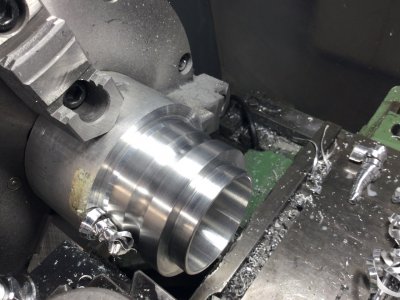My opinion is that rear mounting any tool confers greater rigidity than you can achieve any other way. Two key processes benefit from all the rigidity you can get - parting and knurling. Form tools would also benefit from rear mounting.
I own a little Sherline lathe and it doesn't like to part from the front; it chatters with even light work so you have to run the lathe at very low speeds. However, with a rear mounted parting tool that same lathe will part almost anything I throw on it at high speeds and without a hint of chatter. It is also very accurate, improves cooling/oil deliver and has made parting a routine affair. If you own a Sherline, you need to rear mount your parting tool. I haven't made one for my Emco lathe yet because it parts from the front without issues but I fully intend to make one when I find the time.
Rear mounting a knurler is simple. You just need to get the centerline of the tool fixed in a solid mount at the spindle centerline height. This not only improves rigidity; it also greatly improves visual access to the wheels so you can more easily dial in your depth of cut. I rear mounted the knurler for my Sherline lathe and it seriously improved the rigidity of the tool and greatly improved the quality of the knurls. I highly recommend that you give it a try.
You are very fortunate. Most lathes today do not have T-slots running the length of the cross slide. I would take advantage of that if I were you.


